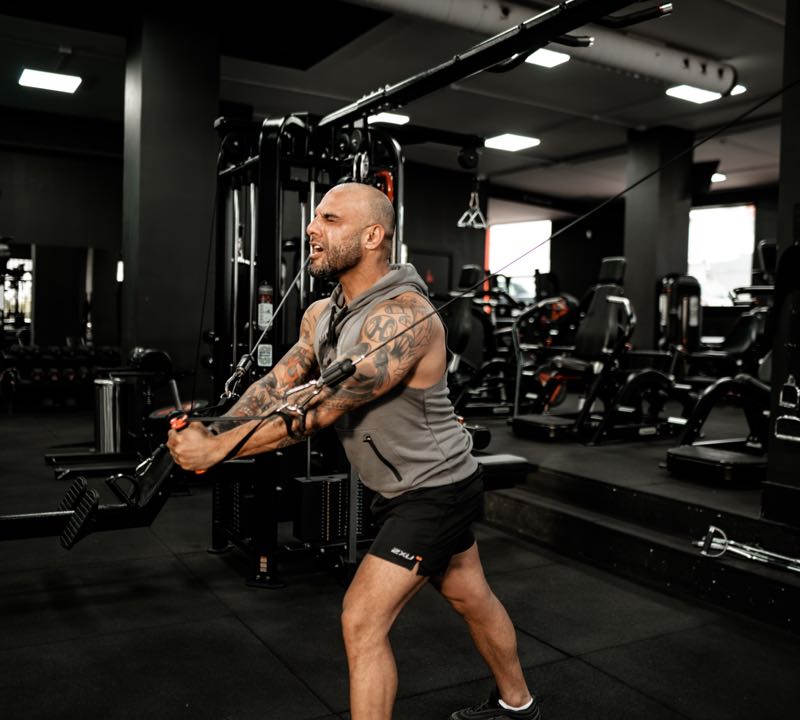Let’s be honest—wrestling is a tough sport. It’s full of intense training, heavy workouts, and high-pressure matches. And because of that, injuries can happen. But here’s the good news: most wrestling injuries can either be prevented or managed better with the right approach.
If you’re a wrestler (or even training like one), you don’t have to accept injuries as “part of the game.” With smart habits, you can protect your body, recover faster, and stay at the top of your performance.
Warm Up Like You Mean It
Too many athletes rush into training or matches without a proper warm-up, and that’s a recipe for injury. Warming up prepares your muscles, joints, and even your mind for the stress ahead.
A good warm-up should include:
- Dynamic stretches (like leg swings, arm circles, hip rotations)
- Light cardio (like jogging, skipping, or shadow wrestling)
- Mobility drills that mimic wrestling movements
This doesn’t have to take forever—10 to 15 minutes of quality warm-up can save you weeks of recovery later.
Strength Training Protects, Not Just Builds
Strength training isn’t only about power—it’s about protecting your body. Strong muscles support your joints and absorb the impact during takedowns, holds, and scrambles.
Focus on compound movements like squats, deadlifts, push-ups, and pull-ups, but also include exercises that target stabilizing muscles. For example, shoulder rotations, resistance band work, and single-leg exercises all help prevent common wrestling injuries.
Remember: a strong body is a safer body.
Don’t Ignore Flexibility
Flexibility is often overlooked, but it’s one of the best defenses against injury. Wrestling involves awkward positions, quick turns, and explosive moves. If your muscles are stiff, they’re more likely to tear or strain.
Add stretching to your routine—after training and on rest days. Yoga and mobility drills are fantastic options for wrestlers who want to stay flexible and agile. Think of it as armor for your muscles.
Technique Matters More Than Force
Here’s a golden rule: sloppy technique leads to injuries. Whether you’re lifting weights in the gym or practicing on the mat, always focus on proper form. Going too heavy, too fast, or too hard with poor technique puts unnecessary stress on your body.
Work with coaches, trainers, or teammates who can help correct your movements. Sometimes, even small adjustments—like how you land from a takedown—can prevent big injuries.
Listen to Your Body
One of the biggest mistakes wrestlers make is ignoring pain. Sure, soreness after training is normal, but sharp or persistent pain is your body’s way of saying, “Something’s wrong.”
Instead of pushing through, take a step back. Rest, ice, compression, and elevation (RICE) can work wonders for minor strains and sprains. If pain doesn’t improve, see a professional. Playing through pain often turns small issues into major ones.
Recovery Is Training Too
Recovery isn’t being lazy—it’s part of training. Your body needs time to repair and grow stronger after intense sessions. Without recovery, you’ll increase your risk of overuse injuries and burnout.
Good recovery habits include:
- Sleep: Aim for 7–9 hours every night.
- Nutrition: Eat protein, carbs, and healthy fats to support healing.
- Hydration: Water helps flush toxins and keeps your joints moving smoothly.
- Active recovery: Light activities like walking, swimming, or yoga to keep blood flowing without overloading your body.
Injury Rehab—Come Back Smarter
If you do get injured, don’t rush your comeback. Work with a coach, physical therapist, or doctor to build a safe recovery plan. Start slow, rebuild strength, and focus on mobility before going full throttle.
Many wrestlers return stronger after injury because they learn to train smarter, not just harder. Think of rehab as another form of training—it’s teaching your body how to perform better and safer.
Mental Side of Injuries
Injuries don’t just hurt your body—they can mess with your head too. It’s frustrating to sit out when your teammates are training or competing. But mindset matters here. Instead of focusing on what you can’t do, focus on what you can do.
Maybe you can still work on upper body strength while resting a lower body injury. Or maybe it’s the perfect time to sharpen your mental game through visualization and strategy planning. Stay positive—it’s temporary.
Injuries may be common in wrestling, but they don’t have to define your journey. With smart habits like proper warm-ups, strength and flexibility training, good technique, and mindful recovery, you can reduce your risk and bounce back stronger if something does happen.
The truth is, the best wrestlers aren’t just tough—they’re smart. They know how to take care of their bodies so they can keep competing at their best for years to come.

Personalized Fitness Studios vs. Gyms: Which Offers More Value for Your Time?
When it comes to fitness, the choices can feel overwhelming. Traditional gyms have been around for decades, offering large spaces, rows of equipment, and memberships

Strength Beyond the Mat: Essential Fitness Training Tips for Wrestlers
When you think about wrestling, most people picture intense matches, powerful moves, and athletes giving it their all on the mat. But what a lot

Wrestler’s Diet Guide: Fueling Your Body for Peak Performance
Every wrestler knows that training hard is only half the battle. The other half? What you put into your body. Your diet can make or break your performance on the mat. Eating the right foods gives you energy, builds strength, helps you recover, and even keeps you mentally sharp.
follow
Error: No feed with the ID 2 found.
Please go to the Instagram Feed settings page to create a feed.
